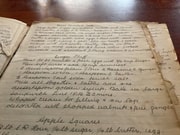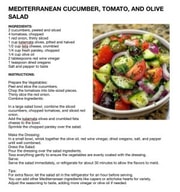Is sugar hiding in your food? New report reveals consumers may be consuming more sugar than recommended
By
- Replies 3
It’s no secret that too much sugar is bad for you. According to recent studies and reputable sources, consuming too much sugar has been linked to obesity and heart disease, among others.
On a personal level, being aware of how much sugar you consume daily is crucial.
The Australian Dietary Guidelines for Adults suggest that the average adult's daily intake of sugar should be about 50 to 70 grams (12 to 15 teaspoons) of sugar a day.
However, the FoodSwitch: State of the Food Supply annual report discovered that added sugar in some common food items was causing Australians to exceed the recommended limit by up to double, consuming up to 22 teaspoons per day.
Dr Daisy Coyle from the George Institute explained that ‘added sugar sneaking in’ undetected in many people’s diets and pushing them to exceed the sugar recommendations is becoming a problem.

‘Too much sugar is contributing to spiralling rates of obesity and associated chronic diseases such as heart disease, stroke, and type 2 diabetes,’ she said.
‘But while most of us know it’s bad for us, cutting back is hard when you can’t tell how much is in the food you are buying – at the moment, manufacturers are only obligated to list total sugars on the product’s nutrition information panel.’
The Health Star Rating (HSR) system standards, which were devised by the government, were utilised by George Institute experts to evaluate more than 25,000 packaged foods and beverages available in shops all around Australia.
According to the research team, Woolworths’ own-brand foods continue to have the greatest overall health rating, followed by Coles and IGA in a tie for second place, and ALDI trailing the pack .
'We found that many products have some redeeming features in terms of fat, salt and sugar, but these can be outweighed by the number of kilojoules they contain which may encourage consumers to overconsume,' the group said.

Dr Coyle advocated for a new strategy for food supply labeling to better inform consumers about the food they eat.
'One of the biggest barriers to the success of the HSR program is that it remains voluntary – we found only 41 per cent of products displayed an HSR on the pack – so there isn’t a level playing field,' she remarked.
'We urge manufacturers to choose quality over quantity and consider how their product choice fits in with a healthy, sustainable diet.'
According to the health expert, the voluntary HSR system has been in place since 2014 but compliance is still low—around 40%—and has declined since last year's report.
'Most notably, IGA has chosen not to participate in the HSR scheme at all, even though they are one of Australia’s biggest retailers.'
Dr. Coyle recommended consumers take the time to examine the food labels of the products they are buying to know exactly what nutrients are going into their bodies.
'Consumers deserve to know what’s in the food they are eating and we strongly support having the amount of added sugar in a product clearly stated. This could also prompt the food industry to reduce the amount of sugar they’re pouring into processed foods.' she said.
Public consultation on planned amendments to food labels, which would mandate businesses to disclose the added sugar amount on their food products' nutritional information panel, is anticipated to begin soon.
While this was a crucial step in assisting Australians in making educated decisions, according to Dr Coyle, any modifications would probably take some time to be implemented.
She said: 'We don’t want shoppers to have to wait years for this information – small changes can really add up.'
'Currently, the only way shoppers can tell how much added sugar is in a product is by downloading the FoodSwitch App and scanning the barcode – this will give an estimate of added sugar content, as well as suggesting healthier alternatives to switch to.'

It should be noted that the Australian government has established a threshold for the food industry of 70% compliance by 2025. However, food producers are still given the freedom to choose whether or not to meet this goal.
We believe that it's helpful to be deliberate about making healthy decisions as you grocery shop. By staying mindful, you can do your best to avoid products with added sugar.
What are your thoughts on this? Do you think food manufacturers should be more transparent in the labelling of their products?
On a personal level, being aware of how much sugar you consume daily is crucial.
The Australian Dietary Guidelines for Adults suggest that the average adult's daily intake of sugar should be about 50 to 70 grams (12 to 15 teaspoons) of sugar a day.
However, the FoodSwitch: State of the Food Supply annual report discovered that added sugar in some common food items was causing Australians to exceed the recommended limit by up to double, consuming up to 22 teaspoons per day.
Dr Daisy Coyle from the George Institute explained that ‘added sugar sneaking in’ undetected in many people’s diets and pushing them to exceed the sugar recommendations is becoming a problem.

Shoppers are urged to carefully read food labels to limit their intake of added sugar. Credit: Pexels/Suzy Hazelwood.
‘Too much sugar is contributing to spiralling rates of obesity and associated chronic diseases such as heart disease, stroke, and type 2 diabetes,’ she said.
‘But while most of us know it’s bad for us, cutting back is hard when you can’t tell how much is in the food you are buying – at the moment, manufacturers are only obligated to list total sugars on the product’s nutrition information panel.’
The Health Star Rating (HSR) system standards, which were devised by the government, were utilised by George Institute experts to evaluate more than 25,000 packaged foods and beverages available in shops all around Australia.
According to the research team, Woolworths’ own-brand foods continue to have the greatest overall health rating, followed by Coles and IGA in a tie for second place, and ALDI trailing the pack .
'We found that many products have some redeeming features in terms of fat, salt and sugar, but these can be outweighed by the number of kilojoules they contain which may encourage consumers to overconsume,' the group said.

Consumers should be aware of how much sugar they're consuming, according to Dr Daisy Coyle. Credit: Pexels/Kampus Production.
Dr Coyle advocated for a new strategy for food supply labeling to better inform consumers about the food they eat.
'One of the biggest barriers to the success of the HSR program is that it remains voluntary – we found only 41 per cent of products displayed an HSR on the pack – so there isn’t a level playing field,' she remarked.
'We urge manufacturers to choose quality over quantity and consider how their product choice fits in with a healthy, sustainable diet.'
According to the health expert, the voluntary HSR system has been in place since 2014 but compliance is still low—around 40%—and has declined since last year's report.
'Most notably, IGA has chosen not to participate in the HSR scheme at all, even though they are one of Australia’s biggest retailers.'
Dr. Coyle recommended consumers take the time to examine the food labels of the products they are buying to know exactly what nutrients are going into their bodies.
'Consumers deserve to know what’s in the food they are eating and we strongly support having the amount of added sugar in a product clearly stated. This could also prompt the food industry to reduce the amount of sugar they’re pouring into processed foods.' she said.
Public consultation on planned amendments to food labels, which would mandate businesses to disclose the added sugar amount on their food products' nutritional information panel, is anticipated to begin soon.
While this was a crucial step in assisting Australians in making educated decisions, according to Dr Coyle, any modifications would probably take some time to be implemented.
She said: 'We don’t want shoppers to have to wait years for this information – small changes can really add up.'
'Currently, the only way shoppers can tell how much added sugar is in a product is by downloading the FoodSwitch App and scanning the barcode – this will give an estimate of added sugar content, as well as suggesting healthier alternatives to switch to.'
Key Takeaways
- Too much sugar is bad for you and can lead to obesity and heart disease.
- The average daily intake of sugar for adults is about 50 to 70 grams or 12 to 15 teaspoons.
- A new study has found that added sugar in common food items is causing Australians to exceed the recommended limit by up to double.
- The study's authors recommend that the amount of added sugar in a product be clearly stated on the food label to help consumers make informed choices.
- Public consultation on planned amendments to food labels is anticipated to begin soon.
It should be noted that the Australian government has established a threshold for the food industry of 70% compliance by 2025. However, food producers are still given the freedom to choose whether or not to meet this goal.
We believe that it's helpful to be deliberate about making healthy decisions as you grocery shop. By staying mindful, you can do your best to avoid products with added sugar.
What are your thoughts on this? Do you think food manufacturers should be more transparent in the labelling of their products?
Last edited by a moderator:







